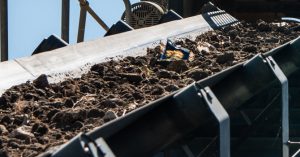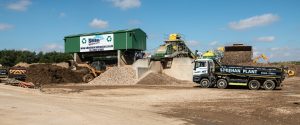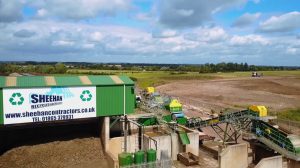Sheehan Group Managing Director Chris Sheehan on why the mass adoption of the circular economy to re-purpose C&D waste can deliver significant carbon savings in construction industry
High recovery rates of construction and demolition waste in Europe is still mainly achieved via practices such as backfilling and low-grade recovery applications.
At first glance this gives the impression the construction industry has high waste recovery rates, which helps mitigate the fact it produces the most waste in the UK and Europe. However, closer inspection of waste management practices reveals C&D waste recovery is significantly based on backfilling operations and low-grade recovery. While this reduces the pressure on landfill, it is not as optimal or sustainable as it could be.
To put the scale of the challenge into perspective in the UK alone around 222 million tonnes of waste is produced per year, of which almost two-thirds is C&D waste. Annual Department for Environment, Food and Rural Affairs figures reveal C&D waste accounts for more than five times that of household waste.

Circular economy
The Circular Driven Economy offers much more compelling ways for the construction industry to achieve net-zero than simply using C&D waste to backfill. It is a genuine alternative to the linear model which still dominates the industry in which contractors use natural resources with the assumption it is plentiful, easy to source and cheap to dispose of.
The circular model is restorative and maintains the use and value of products and materials for as long as possible. This reduces the need for virgin materials and energy and thus the environmental pressure associated with resource extraction, carbon emissions and waste processes. By recycling C&D waste the life cycles of natural resources are significantly extended.
The inherent value of materials within C&D waste is eroded when they are not treated and recycled to produce high-quality materials. For the construction industry to become truly circular there needs to be an increased focus and commitment to maintain three key areas:
- Keeping materials in the economy for as long as possible
- Maintaining materials value/quality as high as possible
- Reducing the use of hazardous substances in materials, products and waste
Embracing technology
We have the technology to produce high-specification recycled products from C&D waste that can be returned into the construction system. Companies including CDE Global invest in innovation to ensure it continues to produce technology that improves the quality of recycled products. The industry needs to overcome stereotypes that recycled products are not of the same quality as virgin materials. Furthermore, wider adoption of recycled materials will not only help prolong construction’s life span and prevent waste, but also help reduce production costs over time.

Improved credibility
More could be done by the industry to develop the credibility associated with the standards of secondary materials, to help improve trust in quality. Continued investment in technology to efficiently remove hazardous substances from materials could also help preserve the lifespan of more materials.
We believe there are a range of interventions available to policy makers that help support an increased adoption of the circular economy by the construction industry that would help improve C&D waste management and the sector’s journey to net-zero. Green taxes and procurement policies could help increase demand for sustainable products and make them more competitively priced, further fuelling demand. An improved standardisation of secondary materials and associated awareness, communication and education campaigns could help improve understanding, buy-in and credibility.
Sustainable materials
There is a growing demand for sustainable products and materials as more construction companies embrace positive change. We have also seen the early shoots of change in some planning departments with using sustainable products being stipulated in some planning conditions. An increasing number of contractors are now using recycled materials not only to help reduce their impact on the environment but to benefit from being part of a more sustainable supply chain as a business.

Culture change
The amount and variety of recycled products entering the market is exciting and bodes well for the future. From smart wood products through to hybrid concrete solutions. At the Sheehan Group we remain committed to the circular driven economy. Our CDE wet processing plant produces high quality recycled sand, sharp sand and aggregate. We also produce low-carbon concrete blocks using C&D waste. We save more than 100,000 tonnes of inert waste from landfill annually and have more capacity.
With a broader adoption of recycled C&D waste products by the construction industry the rate of positive change towards achieving net-zero could be achieved. Transforming waste into high specification materials has the potential to become a standard practice and make a difference. But ultimately it needs stronger backing and a culture change.